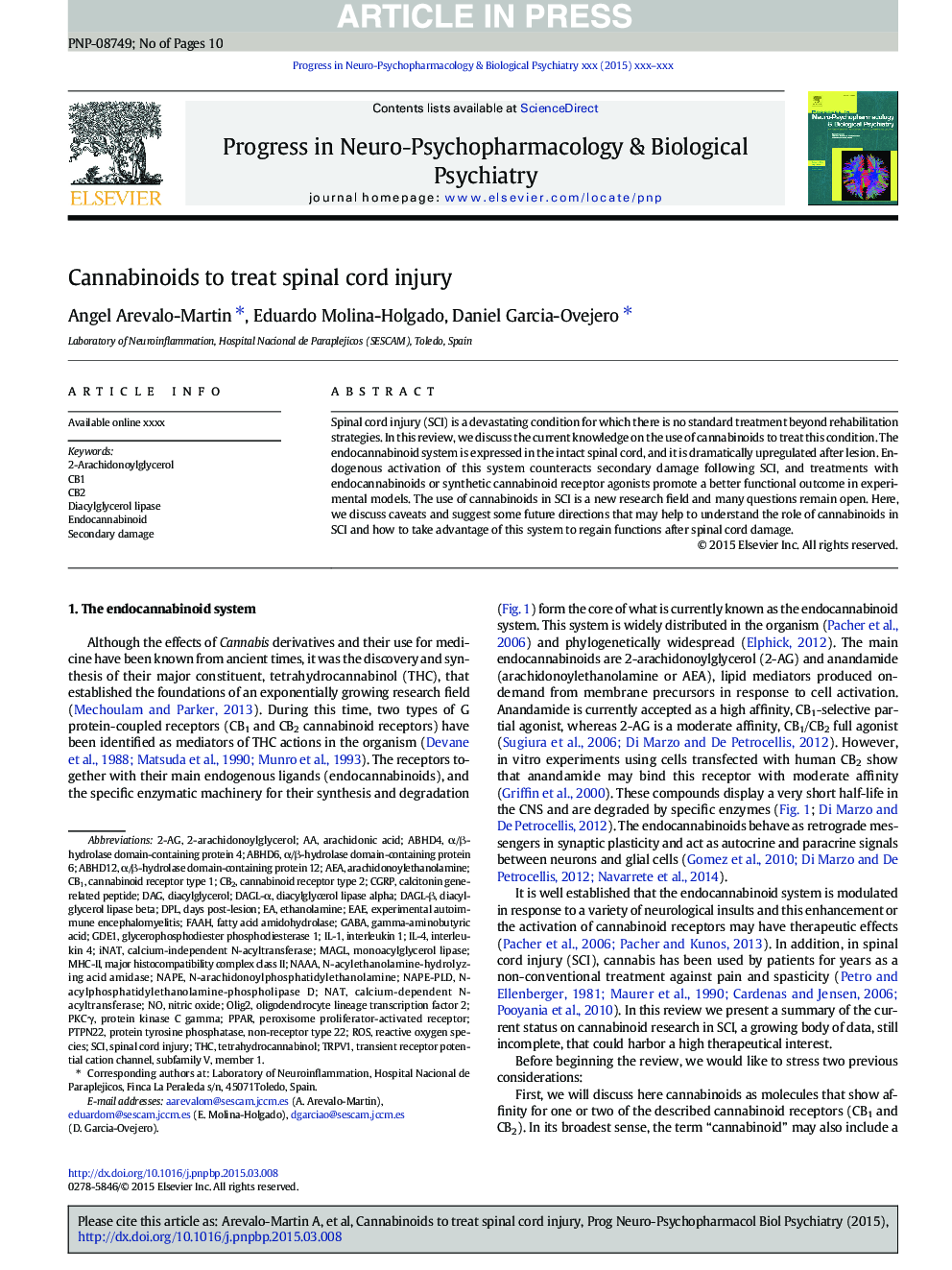| Article ID | Journal | Published Year | Pages | File Type |
|---|---|---|---|---|
| 5844282 | Progress in Neuro-Psychopharmacology and Biological Psychiatry | 2016 | 10 Pages |
Abstract
Spinal cord injury (SCI) is a devastating condition for which there is no standard treatment beyond rehabilitation strategies. In this review, we discuss the current knowledge on the use of cannabinoids to treat this condition. The endocannabinoid system is expressed in the intact spinal cord, and it is dramatically upregulated after lesion. Endogenous activation of this system counteracts secondary damage following SCI, and treatments with endocannabinoids or synthetic cannabinoid receptor agonists promote a better functional outcome in experimental models. The use of cannabinoids in SCI is a new research field and many questions remain open. Here, we discuss caveats and suggest some future directions that may help to understand the role of cannabinoids in SCI and how to take advantage of this system to regain functions after spinal cord damage.
Keywords
tetrahydrocannabinolCGRPCB1PKCγ2-arachidonoylglycerolABHD6FAAHCB2transient receptor potential cation channel, subfamily V, member 1INaTMHC-IITRPV1NAPE-PLDPTPN22DPLabhd4NAAAdays post-lesionoligodendrocyte lineage transcription factor 2fatty acid amidohydrolaseGDE1N-acylethanolamine-hydrolyzing acid amidaseEAEmaglIL-12-AGAEATHCPPARIL-4NATOlig2ROSSecondary damageSpinal cord injuryendocannabinoidexperimental autoimmune encephalomyelitisEthanolamineArachidonic acidgamma-aminobutyric acidinterleukin 1Interleukin 4diacylglycerolDAGscimonoacylglycerol lipasediacylglycerol lipaseNAPEcannabinoid receptor type 1Nitric oxideProtein kinase C gammacalcitonin gene-related peptideMajor histocompatibility complex class IIGABAReactive oxygen speciesperoxisome proliferator-activated receptorcannabinoid receptor type 2
Related Topics
Life Sciences
Neuroscience
Biological Psychiatry
Authors
Angel Arevalo-Martin, Eduardo Molina-Holgado, Daniel Garcia-Ovejero,
